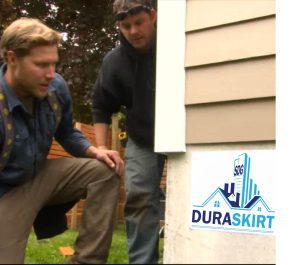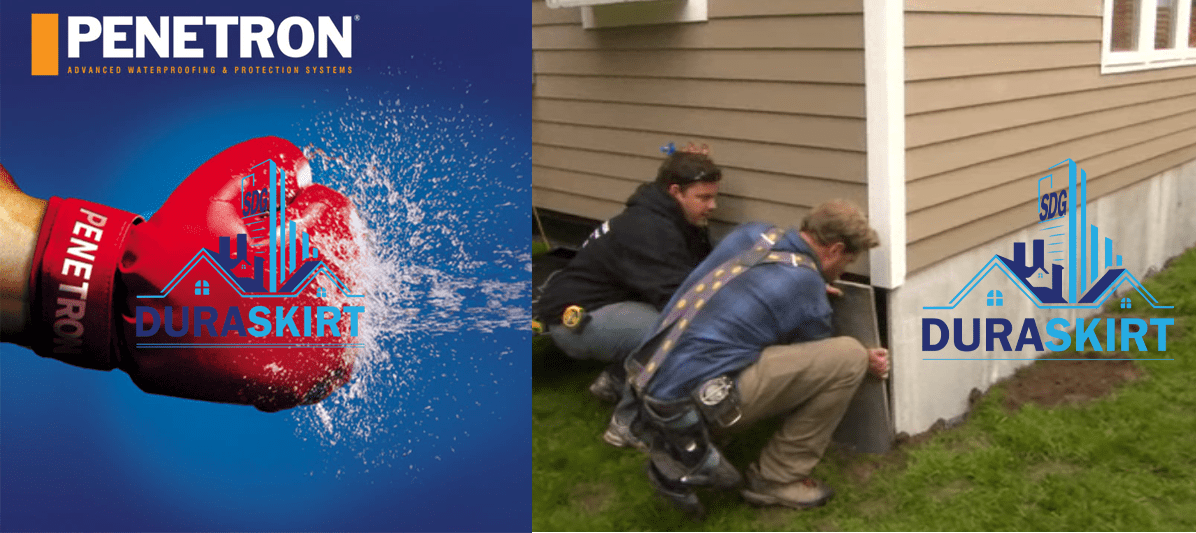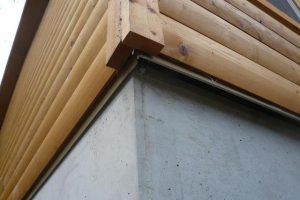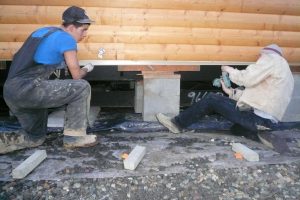Whether you’re outfitting a brand-new manufactured home or giving an older model a facelift, the correct installation of mobile home skirting is crucial for enhancing both the aesthetic appeal and the structural integrity of your home. This guide is designed to walk DIY enthusiasts through the essential considerations and effective strategies to ensure a successful and durable mobile home skirting installation.
Understanding the Basics of Mobile Home Skirting Installation
Mobile home skirting serves multiple crucial functions—it acts as a visual barrier, protects the undercarriage of your home from animals and debris, and significantly improves the insulation of your home. Properly installed skirting helps regulate airflow under the home, which is particularly important in maintaining temperature consistency and can lead to significant energy savings in varying climates.
According to the U.S. Department of Housing and Urban Development (HUD), ensuring that skirting is well-ventilated and maintains the necessary clearances to prevent moisture buildup is essential for the longevity of your home. HUD mandates that skirting materials should be durable, fire-resistant, and appropriate for the climate in which the home is located, with specific requirements for the size and spacing of ventilation openings to prevent moisture-related deterioration and energy inefficiency.
Statistical Insight on Skirting Benefits
Statistical data underscore the importance of effective skirting. Research indicates that properly installed skirting can reduce heating costs by up to 22%, as it minimizes unnecessary airflow that can lead to heat loss. Furthermore, about 15% of mobile homes experience under-home moisture issues that can be mitigated with correct skirting practices, showcasing the dual benefits of structural protection and energy efficiency.
Choosing the Right Materials
When selecting skirting materials, consider the following options:
- Vinyl: Known for its cost-effectiveness and ease of installation, vinyl is a popular choice among homeowners. It is available in a variety of colors and textures, making it easy to match your home’s exterior. However, vinyl may become brittle and prone to cracking in extreme temperatures, which could require more frequent replacements in regions with severe weather conditions.Simply put, it’s not very durable.
- Metal: Metal skirting, typically made from aluminum or steel, offers better durability and better fire resistance, though still not as durable as concrete. It stands up well against harsh conditions and can provide a sleek, modern look to your home’s exterior. The main considerations with metal are its potential to dent and the need for proper treatment to prevent rust in humid climates. Also, it does not provide as great an insulating effect as concrete.
- Concrete Panels (e.g., DURASKIRT™): These provide the best in durability and insulation, meet rigorous HUD standards, and are excellent for all climates but come at a higher cost. Concrete skirting is highly resistant to weather-related damage, including warping, rotting, and pest infestations, making it a long-lasting investment.
Choosing the right materials is critical. We’ve had homeowners literally crying because when they were replacing their old vinyl or wood skirting after just a few years, they found rot in their homes which ended up costing them an additional $40,000 to repair.
Addressing Weather Concerns in Skirting Installation
Weather conditions play a pivotal role in the selection and installation of mobile home skirting. Different materials react differently to environmental stresses, and choosing the right type can significantly extend the lifespan of your skirting.
- Hot Climates: In hot and dry regions, skirting materials need to withstand intense sun exposure without degrading. Light-colored vinyl or specially coated metal can help reflect sunlight and reduce heat absorption, which helps maintain cooler under-home conditions.
- Cold Climates: In areas with cold winters, insulated skirting options such as foam-backed vinyl or concrete skirting can help keep the area under the home warmer, which prevents pipes from freezing and reduces heating costs.
- Wet Climates: For homes in wet or flood-prone areas, skirting that offers excellent water resistance and allows for proper drainage is crucial. Elevated homes may benefit from adjustable skirting solutions that can be modified for better water runoff.
Insulation of mobile homes, especially underneath is important, but your home may not have the needed insulation. We’ve found that in the north, the older homes were made with little insulation under the home. For all these climates, DURASKIRT™ concrete skirting is specially formulated for resistance to rain and humidity as well as providing excellent insulation.
Preparing Your Site Properly
 Effective preparation is crucial before starting your installation:
Effective preparation is crucial before starting your installation:
- Inspect and Repair: Check the rim joist and other structural elements for damage. Repairs are necessary to provide a stable base for the skirting.
- Level the Ground: Ensure that the ground around your home’s perimeter is even to avoid installation issues and ensure structural stability.
- Ensure Accessibility: Keep enough space around your home clear to facilitate the easy movement of materials and installation work.
DIY Challenges and Practical Solutions
Labor & Material Portion
DIY skirting installation can present several challenges, particularly for those who are new to home improvements, due to a combination of factors related to skills, tools, material handling, and the precision required. Here are some of the main reasons why DIYers might find this project challenging:
- Complexity of Task: Skirting a mobile home involves multiple steps that must be executed in the correct order and with precision. These include measuring accurately, cutting materials to the right size, ensuring level installation across potentially uneven ground, and securing the skirting effectively. Each of these steps requires a good understanding of basic construction principles, which might be daunting for beginners.
- Tools and Equipment: Proper installation of skirting requires specific tools such as levels, saws, drills, and possibly more specialized equipment depending on the material used (e.g., heavy-duty cutters for metal or concrete). New DIYers might not have immediate access to these tools or the experience to use them safely and effectively.
- Material Selection: Choosing the right type of skirting material to meet both aesthetic desires and practical needs can be complex. Factors to consider include durability, maintenance, insulation properties, and compliance with local building codes. Misjudgments in material selection can lead to premature wear, inadequate protection, or compliance issues.
- Physical Labor: Installing skirting involves significant physical effort, including digging, lifting heavy panels, and lots of bending and kneeling. This can be physically demanding, especially for those who may not be accustomed to such labor-intensive activities.
Other Issues
- Unexpected Issues: If you are removing old vinyl, wood, or metal skirting which didn’t properly protect your home, you may find mold, rot, or pests which cause additional issues to address. We had one crew that was replacing wood skirting and insulation. While they were pulling the old insulation, a possum dropped on one of the crew member’s chest. He ran out of there so quickly, screaming! He called the animal Dracula because of how it tried to bite him.

We had one crew that was replacing wood skirting and insulation. While they were pulling the old insulation, a possum dropped on one of the crew member’s chest. He ran out of there so quickly, screaming! He called the animal Dracula because of how it tried to bite him.
- Weather Conditions: The process can be affected by external conditions such as wind, rain, or extreme temperatures, which can hinder the installation process or affect the curing and settling of materials like concrete.
- Regulatory Compliance: Understanding and adhering to local building codes and HUD standards (for the U.S.) can be challenging. These regulations might dictate specifics about ventilation, material types, and installation methods, which if not followed, could lead to fines or the need to redo the work.
- Problem-Solving Skills: Unexpected issues often arise during home improvement projects. For instance, the ground may not be as level as initially thought, or existing damage to the home’s structure could require additional repairs before proceeding. Effective problem-solving and adaptability are crucial, skills that typically improve with experience.
These factors combined make DIY mobile home skirting installation a challenging project, particularly for those new to DIY tasks. It requires a balanced mix of practical skills, physical labor, and attention to detail, all of which are developed through experience and education in home improvement projects.
Step-by-Step Guide to DIY Mobile Home Skirting Installation
- Measure and Plan: Calculate the required amount of skirting material by measuring the perimeter of your home and the height from the ground to the base.
- Material Selection: Choose materials that align with your home’s style and your climate’s demands.
- Installation: Start from the corners and proceed around the home, ensuring each panel is level and securely attached.
- Sealing and Securing: Apply sealing materials to fill any gaps, enhancing both the insulation and the security of the skirting.
- Final Inspection: Conduct a thorough inspection from various angles to ensure everything is properly secured and visually appealing.
Ensuring Success in Your DIY Mobile Home Skirting Project
- Purpose of Skirting: Enhances aesthetic appeal and structural integrity of mobile homes. It acts as a visual barrier, protects from animals and debris, and improves insulation.
- HUD Regulations: Skirting must be well-ventilated, maintain necessary clearances to prevent moisture buildup, and meet specific durability and fire-resistance standards appropriate for the climate.
- Statistical Benefits: Properly installed skirting can reduce heating costs by up to 22% and mitigate under-home moisture issues, improving both structural protection and energy efficiency.
- Material Choices:
- Vinyl: Cost-effective and easy to install; available in various colors and textures but may become brittle in extreme temperatures.
- Metal: Offers better durability and fire resistance. Indeed it’s ideal for variable weather but can dent and may require rust prevention in humid climates.
- Concrete Panels (e.g., DURASKIRT™): Highly durable and insulated, meets HUD standards, resistant to weather damage but more expensive.
- Weather Concerns:
- Hot Climates: Skirting materials should withstand sun exposure and reduce heat absorption.
- Cold Climates: Insulated skirting options are beneficial for preventing pipes from freezing and reducing heating costs.
- Wet Climates: Skirting should offer water resistance and proper drainage, especially in flood-prone areas.
- Site Preparation:
- Inspect and repair any structural damages.
- Level the ground to avoid installation issues and ensure stability.
- Maintain clear access around the home for material and tool movement.
- DIY Challenges:
- Complexity of Task: Requires precision in measuring, cutting, and installation.
- Tools and Equipment: Specific tools needed which may not be readily available to all DIYers.
- Material Selection: Needs careful consideration of durability, maintenance, and insulation properties.
- Physical Labor: Demanding effort required, which might be challenging for some.
- Weather Conditions: External conditions can impact the installation process.
- Regulatory Compliance: Must adhere to local building codes and HUD standards.
- Problem-Solving Skills: Necessary for addressing unexpected issues during the project.
Mobile Home Skirting Installation
- Installation Steps:
- Measure and plan the required amount of material.
- Select materials that fit the home’s style and climate needs.
- Ensure each panel is level and securely attached.
- Seal any gaps to enhance insulation and security.
- Conduct a thorough final inspection to ensure secure and visually appealing installation.
- Additional Resources: Encourages consulting with skirting experts or accessing detailed installation videos for further guidance.
Finally, by following the guidelines outlined in this guide, homeowners can confidently undertake their own mobile home skirting projects. Moreover, enhancing both the curb appeal and the structural integrity of their homes. Also, from selecting the right materials to addressing various weather conditions and preparing the site properly. For instance, each step is crucial for achieving a durable and aesthetically pleasing result.
Remember, while DIY projects can be challenging, particularly for beginners, the right preparation and understanding helps lead to successful outcomes.
For further assistance, don’t hesitate to consult with skirting experts or utilize detailed installation videos provided by manufacturers like DURASKIRT™. Best of all, with patience and careful execution, your DIY mobile home skirting will significantly improve your home’s value. Especially, the efficiency and compliance with safety standards.






Recent Comments